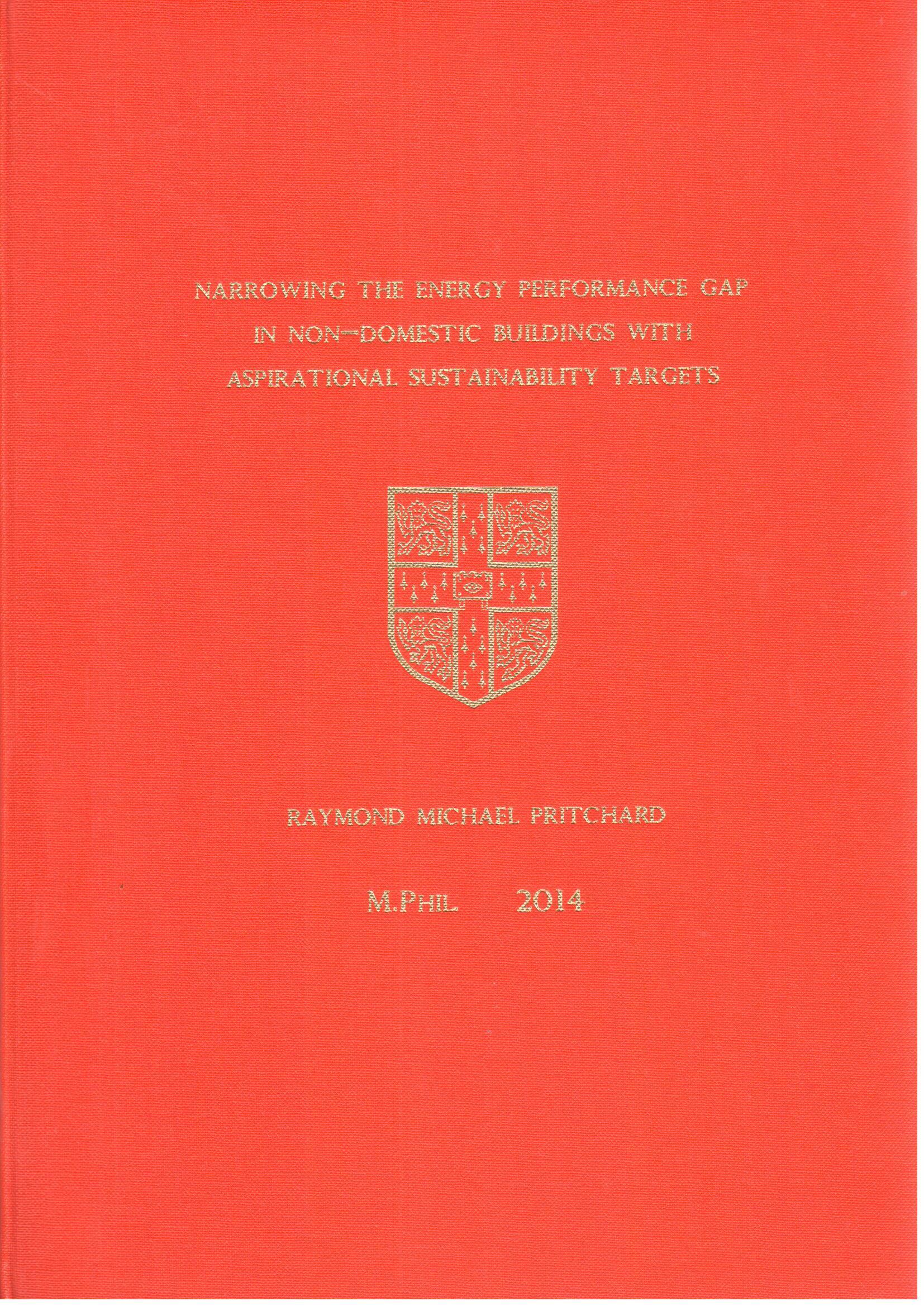
Submitted by Administrator on Fri, 18/08/2017 - 13:42
Realising Operational Energy Performance in Non-Domestic Buildings: Lessons Learnt from Initiatives Applied in Cambridge
See link for full text of new publication by Ray Pritchard (ESD MPhil 14) and Scott Kelly (ESD MPhil 08) based on Ray's ESD MPhil dissertation supervised by Dr Scott Kelly.
Abstract:
The gap between the intended and actual energy performance of buildings is increasingly well documented in the non-domestic building sector. Recognition of this issue has led to the availability of a large range of initiatives that seek to ensure energy efficient building operation. This article reviews the practical implementation of three such initiatives in a case study building at the University of Cambridge. The notionally high-performance office/laboratory building implemented two voluntary design frameworks during building planning and construction: the voluntary rating scheme BREEAM and a bespoke Soft Landings framework called the Cambridge Work Plan. The building additionally meets the energy reporting criteria for the EU Energy Performance of Buildings Directive (EPBD), a legislative requirement for many publicly owned buildings in the UK. The relative impact of these three approaches for optimising building energy performance is reviewed through a mixed methods approach of building occupant and operator interviews, document analysis and energy performance review. The building’s core functions were revealed to consume 140% more energy than the building logbook estimate for the same needs. This difference, referred to widely as the energy performance gap, is larger than the majority of reported UK university buildings in the energy reporting database CarbonBuzz. The three implemented initiatives are demonstrated to be inadequate for reducing the energy performance gap in the case study, thus a number of alternative energy efficiency approaches are additionally reviewed. Common to the three approaches used in the case study is a lack of verification of actual building performance despite ambitious sustainability targets, due to a heavy focus on the design-stage and few follow-up mechanisms. The paper demonstrates the potential of energy efficiency initiatives that are focussed on operational performance as a core criterion (such as the Living Building Challenge) together with those that ensure the creation of realistic energy estimates at the design stage (such as the Chartered Institution of Building Services Engineers (CIBSE) Technical Memorandum 54).
